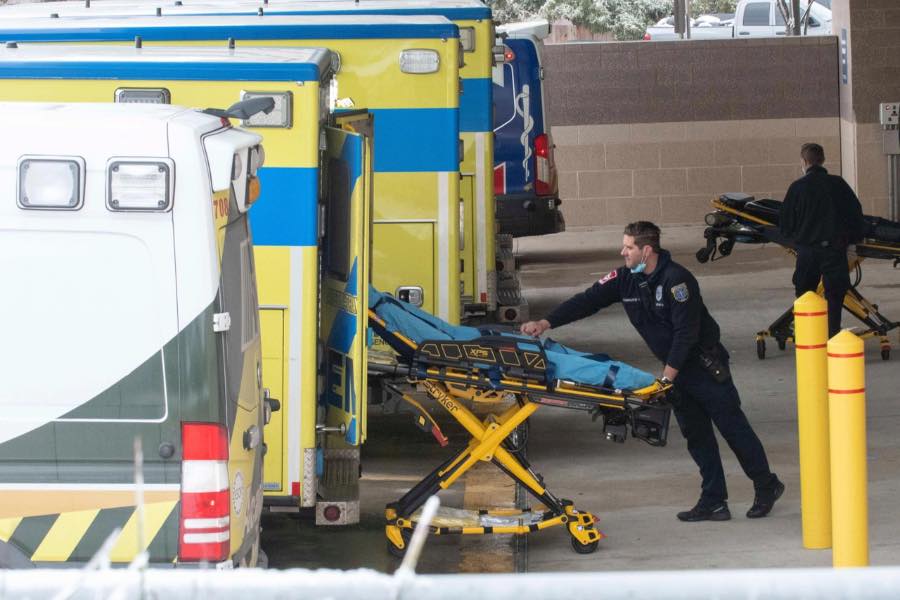
T-Mobile on Thursday announced it is now the primary connectivity provider for the City of New York's public safety network, which is used by about 40,000 first responders.
"This is one of the largest wins in our business group history," Callie Field, president of T-Mobile's business group, told Light Reading.
Field said that T-Mobile counts around 2 million customers in the nationwide market for first responders. That would leave AT&T and Verizon to command the remaining 12 million public safety connections in the market. But Field said T-Mobile has been rapidly growing its first responder customer base since it launched its T-Priority 5G network slicing service for first responders late last year.
"While I can't share particular customer numbers, I can tell you that our funnels in this area have grown over ten times," Field said.
To compete with AT&T's FirstNet and Verizon's Frontline, T-Mobile has been emphasizing its public safety business over the past few years with various discounts, services and promotions. T-Mobile also argues that it offers first responders 40% more 5G capacity than its rivals.
Now, T-Mobile is looking to leapfrog its competitors with 5G slicing technology unavailable anywhere else.
Indeed, wireless network research company Signals Research Group (SRG) recently found that T-Mobile's first responder efforts are paying off. "The results show that T-Priority scores the best for overall network experience (788 points out of a possible 1,000 points), as well as having the best score for overall data experience," SRG's Michael Thelander wrote in a LinkedIn post about his recent tests of FirstNet, T-Priority and Frontline in New York City.
Slicing to grow
"We've been working with slicing now since 2023," Ulf Ewaldsson, T-Mobile's president of technology, told Light Reading.
That work stems from T-Mobile's launch of standalone 5G technology in 2022. T-Mobile uses a converged, cloud-native 4G/5G core from Cisco and recently put its telco cloud into the Red Hat OpenShift platform.
Ewaldsson explained that there are several elements to the network slicing technology behind T-Priority. First, there's the 5G quality-of-service identifier (5GI), which is similar to the QoS Class Identifier (QCI) that governs different levels of quality-of-service on 4G networks.
"We've given the highest priority to first responders," Ewaldsson said.
"We've given a higher weight to all the [data] packages that are being used by first responders," he added, explaining that data transmissions among T-Mobile's first responder customers get a 5X higher weight than those of other customers.
"We've created a floor and a ceiling so that there's no opportunity for them to get less than a certain speed level that we can then guarantee," Ewaldsson said. "We're guaranteeing something that has never been guaranteed before, for example an uplink that always works."
During T-Mobile's recent quarterly earnings call, CEO Mike Sievert said network slicing will create a direct revenue opportunity from customers paying for the service, as well as a "share taking opportunity" among customers who shift their phones to T-Mobile because of its advanced offerings.
The controversy
T-Mobile has faced some challenges in New York City. For example, FCC officials recently found that the company's 5G network was interfering with NextWave's 2.5GHz network in the city.
FCC officials haven't responded to questions about possible repercussions, or how T-Mobile might rectify the interference. T-Mobile officials declined to comment on the NextWave issue.
However, a source at a network-monitoring company told Light Reading that T-Mobile's 5G performance in New York has not changed in recent months.
"We do not have interference issues on the network as it stands," Ewaldsson said referring to the network in New York. "We are continuously working across the nation where there are 2.5 [spectrum] holders to make sure that we can co-exist in the best possible way."
T-Mobile is also pursuing AT&T and Verizon customers via its new SpaceX-powered satellite messaging service. That offering will be available at no extra charge to first responders.
According to Jon Freier, president of T-Mobile's consumer group, the operator transmitted 500,000 texts when offering the satellite service for free during the Helene and Milton hurricanes and the recent LA wildfires.
"There's just a ton of enthusiasm around this," Freier said.
AT&T on Thursday took aim at T-Mobile's newest network slicing announcement. "While other network solutions might say they are devoted to public safety, they hide the truth in fine print: throttled speeds during an emergency and a network build based on the bottom line, not the needs of public safety," said AT&T FirstNet President Scott Agnew in a statement.
Agnew referred to the fine print in T-Mobile's T-Priority announcement that states: "Coverage not available in some areas and may be impacted by emergencies; check your response area."
In response to questions from Light Reading about that language, a T-Mobile representative explained that it's "a general network disclaimer that you will find with all carriers. It simply means that there are some places where coverage may impacted due to unforeseen issues (like severe weather events or natural disasters) or there are places in the US where no cellular signals reach."
The article was originally published by Light Reading.
